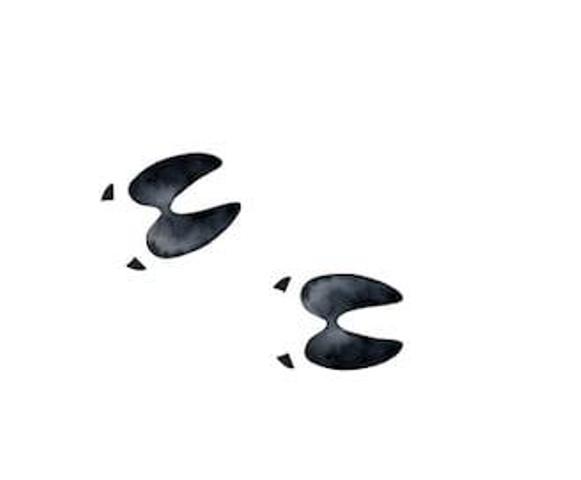Hog tracks can be useful when hunting hogs, as they can provide information about the movement and behavior of the hogs in a given area.
By studying the tracks, hunters can gain insights into where the hogs are feeding, resting, and moving, which can help them plan their hunt and increase their chances of success.
Wild Hog Tracks
The footprints of wild hogs have a rounded overall look and blunt toes. They are different from deer tracks which have elongated and parallel hoofs and dewclaws.
You can read more about hog track vs deer track in this article.

Wild Pig Tracks
Why You Should Use the Right Equipment When Hunting Wild Pigs
When hunting wild pigs, you should make sure you use the right optics. The best choice for you should be spotting scopes and a rifle scope. Binoculars are ideal since they allow you to search with both eyes.
If you’re constantly on the move looking for wild pigs, binoculars are the best option for you.
Spotting scopes, on the other hand, work best with a tripod since they are larger. They are ideal for long distance hunts on variable terrain. Using them enables you to find out details about the environment you’re hunting in.
Why Identify Pig Tracks?
Feral pigs leave behind tracks, giving you an idea of the hog population and the way how to find hogs. If you’re looking for their favorite routes, the presence of well-worn paths is one sure indication. Moreover, if you encounter overgrazed plants, you should know their number is large.
Reasons for Hunting Hogs
Wild hogs can cause great damage to plants and lawns. If you keep livestock, they increase the risk of transmission of diseases. Using the right hunting equipment enables you to reduce their numbers.
Where to Track Hogs
You can find wild hog tracks around muddy patches in crop fields and yards. Feral pigs love wallowing in the mud to cool off from hot temperatures.
Since wet soil retains the pig’s prints, it’s the best place to look for their tracks. These animals also love scratching around fences and trees, meaning you can look for their tracks in these places.
